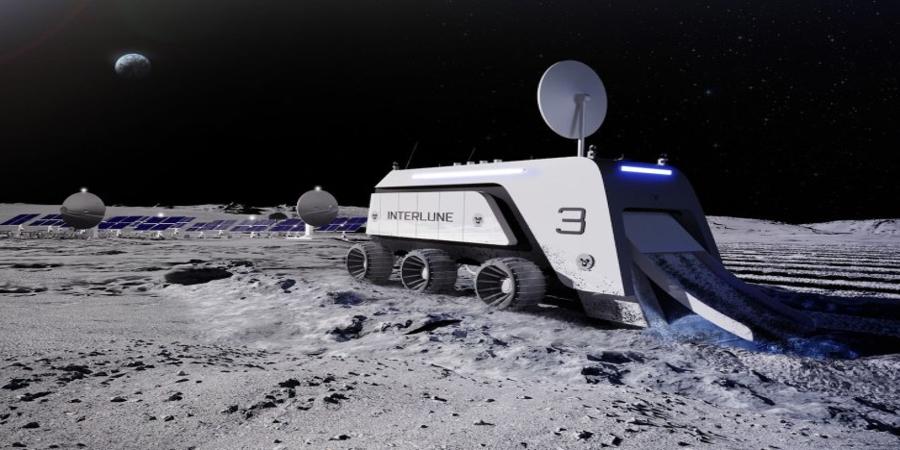Interlune, a stealth startup headed by ex-Blue Origin executives, is focused on mining the moon for a rare isotope of helium that could be used to scale quantum computing and eventually even fusion power, TechCrunch has learned.
Regulatory filings reported here last week showed that the company recently closed $15.5 million in new capital; before that, Interlune had raised a $2.69 million pre-seed round. But the rationale for raising the capital was poorly understood — until now.
Two of Interlune’s confidential pitch decks, dated spring 2022 and fall 2023 and viewed by TechCrunch, reveal that the startup was seeking that funding to build and test resource extraction hardware for lunar helium-3 (He-3). A representative for Interlune declined to comment.
Interlune says in the most recent pitch deck that it has developed a “breakthrough extraction method” for He-3 from lunar regolith, though the slides don’t go into greater detail. According to one slide, the startup is developing sedan-sized extractors combined with other hardware to effectively make scalable physical plants. There is no explanation of how the helium might be stored, or how it might be transported back to Earth, however.
He-3 is a stable isotope of helium; while Earth is shielded from solar wind by its magnetic field, the moon is bombarded with with it, and high-energy particles like He-3 are deposited onto the lunar surface. On Earth, the most common source of He-3 is from the decay of tritium, a man-made element used in nuclear weapons. Interlune predicts an “exponential” rise in demand for He-3 in the coming years, driven by areas like quantum computing, medical imaging, in-space propellant and fusion, to the extent that it projects an annual demand of 4,000 kilograms by 2040 (versus just 5 kilograms now).
The good news is that He-3 is as abundant on the moon as it is scarce on Earth. Mining the moon for He-3 is not a new concept: Data collected since the Apollo mission shows the isotope is plentiful there. But for years, it’s long been considered the stuff of science fiction: Scientists have never come close to developing the kind of extraction technology necessary to make such an endeavor worthwhile. He-3 could be used to power fusion reactors — an especially enticing concept, as the byproducts would not be radioactive — but while nuclear fusion research has made major gains in the past few years, it will take many more steps to make fusion a commercially viable energy source here on Earth (let alone in space).
Other countries have already started to look to our moon to resolve this problem. Most notably, China announced in 2022 that its Chang’e-5 robotic mission had collected a new moon mineral that contained He-3, suggesting even greater reserves than previously thought.
China’s interest in He-3 mining creates a national security imperative to securing these vast tonnages of the resource on the moon — which could mean promising traction for Interlune from both government agencies doling out non-dilutive government contracts and investors looking for a defense-focused angle.
Interlune’s executive team includes CEO Rob Meyerson, a prolific space industry investor and previous president of Blue Origin; CTO Gary Lai, former chief architect at Blue Origin; and COO Indra Hornsby, with industry experience at Rocket Lab, BlackSky and Spaceflight Industries. The startup has been in existence for at least three years, but beyond a few brief public statements, this is the first time the public has learned about its plans with any detail.
The deck also says that Interlune is planning to demonstrate the tech on the moon as early as 2026, with a pilot plant extracting He-3 in 2028. Should the plans work out as the company hopes, it told investors it could see $500 million in annual recurring revenue from He-3 recovery by the start of the next decade — and only going up from there.
But still, this is an expensive plan: The company will need to pay for launch, secure a resource return partner and build out all of the hardware necessary to start mining at scale. The economics, like the cost to mine a gram of helium, are also unclear. But if Interlune manages to pull it off, it will be in a category of its own: There are other startups focused on in-space resource extraction, but they are either focused on using lunar resources purely for on-orbit applications (like Argo Space Corporation) or they are focused on minerals only (like AstroForge).
Source @TechCrunch



